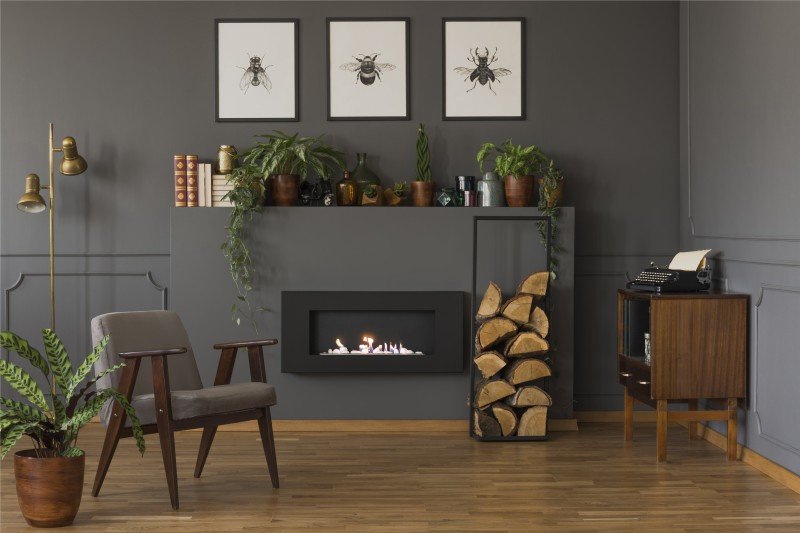The Timeless Appeal of Traditional Fireplaces in the UK
Traditional fireplaces have long been important to homes across the United Kingdom, transcending simple utility to become focal points of heat, comfort, and aesthetic charm. This post looks into the enduring appeal of traditional fireplaces, exploring their history, style variations, installation factors to consider, and their modern-day importance.
Historical Significance of Fireplaces
The fireplace has played a central function in British homes since medieval times. Initially, they were vital for heating and cooking. Over the centuries, with the arrival of central heating and technological developments, fireplaces have transformed into signs of heritage and design.
Secret Historical Milestones
| Date | Milestone | Description |
|---|---|---|
| 12th Century | Introduction of Chimneys | Allowed indoor fireplaces to be typical, better ventilation. |
| 16th Century | The Renaissance influence | Fireplaces ended up being more decorative, showing the era's designs. |
| 18th Century | The Georgian Era | Developed complex mantels made from wood and stone. |
| 19th Century | Victorian Era | Intro of cast-iron and tiled fireplaces. |
| 20th Century | Decline and Modern Design | Shift towards gas and electric, with some revival of traditional styles. |
Kinds Of Traditional Fireplaces
While contemporary styles concentrate on minimalism, traditional fireplaces often exhibit elaborate craftsmanship and historic significance. Here are some popular types of traditional fireplaces frequently found in the UK:
Open Hearth Fireplaces
- Defined by a large opening and typically built from brick or stone.
- Offers a cozy atmosphere and the sound of crackling flames.
- Needs an appropriate flue to reroute smoke outdoors.
Wood-Burning Stoves
- Enclosed systems that burn wood for heat, often featuring a glass door.
- More efficient than open hearths, supplying much better heat retention.
- Offered in various styles, from rustic to contemporary.
Cast Iron Fireplaces
- Popular in the Victorian age, known for elaborate designs.
- Durable and prominent for excellent heat conduction.
- Generally function elaborate patterns or themes, enhancing visual appeal.
Tiled Fireplaces
- Typically adorned with ornamental tiles, these fireplaces display artistic style.
- Typical in the 19th century, tiles can feature scenes or flower styles.
- Usually matched with wood or cast iron elements.
Marble Fireplaces
- Popular for their beauty, these fireplaces are generally custom-made.
- Marble provides an elegant surface and matches various interior styles.
- They require careful installation due to their weight.
Table: Comparison of Traditional Fireplace Types
| Fireplace Type | Heat Efficiency | Aesthetic Appeal | Maintenance Needs | Fuel Type |
|---|---|---|---|---|
| Open Hearth | Low | High | High (chimney cleansing) | Wood |
| Wood-Burning Stove | High | Moderate | Moderate (wood supply) | Wood |
| Cast Iron | High | High | Low | Wood/Gas |
| Tiled | Moderate | Very High | Low (if non-usable) | N/A |
| Marble | Moderate | Extremely High | Moderate | N/A |
Considerations for Installing a Traditional Fireplace
Setting up a traditional fireplace can boost a home's character however comes with specific considerations. Here are some points homeowners need to bear in mind:
- Building Regulations: Always check local structure codes and guidelines. Installation may require approval, especially if structural modifications are required.
- Material Selection: Choose products that match the home's architecture and personal design. Think about usefulness along with visual appeal.
- Ventilation: Ensure correct ventilation through a chimney or flue to prevent smoke and gases from accumulating inside your home.
- Safety Precautions: Install carbon monoxide detectors and guarantee all precaution remain in location, particularly if utilizing wood-burning alternatives.
- Expert Installation: Engage a certified contractor to ensure safe and reliable installation, following safety standards.
Benefits of Traditional Fireplaces
Despite the rise of modern heating options, traditional fireplaces stay precious for several factors:
Aesthetic Charm
- Adds character to any room.
- Serves as a social focal point, enhancing events.
Mental Comfort
- Supplies heat not just physically but emotionally.
- Produces a cozy environment ideal for relaxation.
Worth Addition to Property
- Improves the appeal of a home to prospective buyers.
- Frequently increases home value due to their desirability.
Ecological Considerations
- Wood can be a sustainable resource when sourced sustainably.
- Traditional fireplaces can contribute less to energy costs compared to electric systems.
Often Asked Questions (FAQs)
1. Are traditional fireplaces energy efficient?
While traditional fireplaces may not be as energy-efficient as modern heater, improvements in design, such as the setup of glass doors, can enhance their efficiency. Wood-burning ranges are particularly understood for being more efficient than open hearths.
2. How frequently should traditional fireplaces be cleaned?
Chimneys should be checked and cleaned at least once annually, specifically if the fireplace is used frequently. This prevents creosote accumulation, which can result in chimney fires.
3. Can Best Fireplace Online utilize a traditional fireplace for gas heating?
Yes, traditional fireplaces can frequently be transformed to utilize gas. This involves installing a gas line and might require a conversion kit depending upon the fireplace model.
4. What are the best fuels for wood-burning fireplaces?
Seasoned hardwoods such as oak, hickory, or maple are advised for wood-burning fireplaces as they burn hotter and longer than softwoods.
5. Can traditional fireplaces be utilized in modern homes?
Definitely! Many modern designs include traditional components, allowing for a harmonious blend of styles. Additionally, traditional fireplaces can include a special touch to contemporary homes.
From their historic significance to their modern-day significance, traditional fireplaces remain an essential feature in numerous UK homes. Their enduring popularity is not just rooted in their functionality but also in the warmth and charm they use. Whether one select a timeless open hearth or a perfectly tiled fireplace, the choice adds to developing an inviting environment where memories can be made. As homeowners become more conscious of visual appeals and fond memories, traditional fireplaces are poised to preserve their attraction for generations to come.

